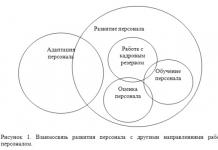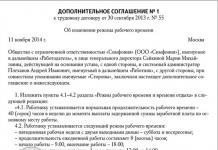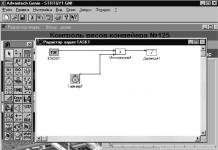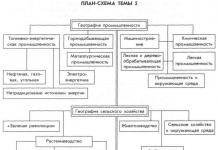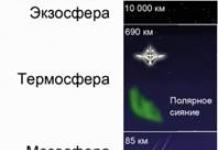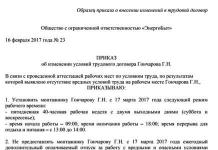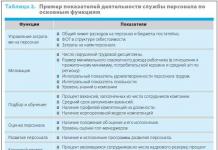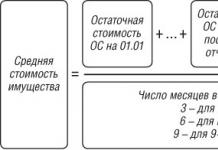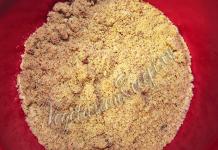We will send the material to you by e-mail
In the modern world, there is a significant range of high-tech and functional antennas for installation at home. But there are times when the TV has stopped showing in a country house. Some craftsmen find a way out of this situation and make something that helps correct the situation. Moreover, they give recommendations to others: how to make an antenna with your own hands for a TV. Let's look at simple methods that may be useful to you.
Homemade devices are especially good when they are needed for temporary use
The simplest and most unusual option to construct an antenna is from beer cans. And according to experts, as many as seven channels will be shown. To build such a structure, prepare:
When deciding how to make your own antenna for a TV, keep in mind that the gap between the end parts of the cans should be about 75 mm. And the best location of the structure is near the windows.
The stick that will be used for the antenna should be made of wood. You cannot take aluminum or titanium options. Cable parts can be soldered. Instead of tape, you can use electrical tape or even a band-aid. Containers for creating the device must be thoroughly washed and dried. To improve image quality, you can “play” with the distance between the banks.
Table 1. Antenna made from beer cans
| Image | Stages |
|---|---|
 | Prepare the cable. To do this, make a cut on one edge and remove the insulation layer. Then the middle layer is cut off. A plug for the TV antenna is mounted at the other end. |
 | Stock up on cans. Their capacity should be 1 liter! |
 | Make contacts. One end of the twisted cable is mounted to the can, and the other with a copper core to the other. Fastening is carried out using a screwdriver and a soldering iron. |
 | Assemble the antenna. A trempel is used as a supporting device. |
 | Set up your device. |
Related article:
In the article we will look at the application features, types of devices, secrets of selection and installation.
Is it possible to make a homemade antenna for digital television from wire?
A good way is to use copper wire to create an antenna. For such a mechanism you will need an amplifier, wire, sheet of metal, drill, bolts, metal pipe, cable and hammer.
To make such a homemade home antenna for a TV, we perform the following operations:
- At the first stage we make a catcher. To make it, the wire must be bent so that all sides have a length of 45 cm;
- Next, we fix the wire on the plate. In this case, a connection is made to the plate;
- cable is connected;
- A mast is made from a metal pipe. Its foundation needs to be buried.

Helpful information! All details should be painted over. This will protect the product from corrosion and aggressive operating conditions.
DIY antenna option for digital TV HDTV
There are various methods for making a TV antenna with your own hands. The first two methods we considered operate at a frequency of 270 MHz. And the next option has great possibilities. In this case, the picture will be of higher quality, since the signal can reach 490 MHz. You will definitely need a special transformer, which is unlikely to be found among the materials at hand. Such a device should be purchased in advance. There are also methods for making a transformer yourself, but they are quite complicated. The materials you should prepare are cardboard, tape, foil, stapler, marker, tape measure and glue.
- First, you should print a special diagram for installing such a device. According to the diagram, all structural elements are cut out, as well as all the necessary foil parts. Then you need to make a butterfly out of cardboard and paint over individual parts with a marker.
- The next step is to build a reflector, the size of which is 35-32.5 cm. One of the sides is glued with foil.
- Rectangles of the same size are cut out in the middle. They are needed to construct a catcher for the structure. The length of the plate should be about 35 mm. This product is designed to maintain the distance between additional elements and the reflector.
- The individual parts are glued to the rectangular element. Then the recesses for the cable are drilled.
The correct instructions will tell you how to make an antenna for a TV with your own hands. A transformer must be connected, and the cable must be installed in the plug. This method is only suitable for indoor use, as the paper will quickly become unusable outdoors.
The table details all stages of installing such equipment.
Table 2. DIY antenna for digital TV HDTV
| Image | Stages of work |
|---|---|
 | Prepare the necessary material. |
 | Print the template and cut it out. |
 | Cut out a reflector from cardboard and then cover it with foil. |
 | Cut out rectangles in the middle. |
 | You also need to cut out all the necessary parts from cardboard. This applies the template. |
 | It's better if you make all the details in color. |
 | Foil is also cut using stencils. |
 | To create a bend, a small undercut is made on the dotted line. |
 | Foil is glued to individual antenna elements. |
 | The antenna is being assembled. At the same time, measure 35 mm from the reflector and glue the butterfly. |
 | A hole is made in the middle of this element for the passage of the cable. |
 | A suitable transformer is installed and the antenna is ready. |
Related article:
This article talks about what parameters a high-quality TV stand has, and photos and descriptions will help you choose the best option for your interior.
Nuances of the apartment option
When making some types of structures, you can make an antenna amplifier with your own hands. Try to make a high-quality amplifier from scrap materials that can be used for both outdoor and indoor use.
To carry out the work you will need the following materials:
- copper wire, the length of which is 4 m and the diameter is about 4 mm;
- board of any thickness with a width of 70 mm and a length of 550 mm;
- screws and screwdriver;
- plug and soldering iron;
- pencil and ruler.

Follow the drawing. Start by drilling holes in the surface. The parameters from the diagram are transferred to the board, and drilling is performed in certain places. The copper wire is measured and cut into 8 equal sections. In the middle of each segment you need to remove the insulation.
Once upon a time, a good television antenna was in short supply; purchased ones did not differ in quality and durability, to put it mildly. Making an antenna for a “box” or “coffin” (an old tube TV) with your own hands was considered a sign of skill. Interest in homemade antennas continues to this day. There is nothing strange here: the conditions for TV reception have changed dramatically, and manufacturers, believing that there is and will not be anything significantly new in the theory of antennas, most often adapt electronics to long-known designs, without thinking about the fact that The main thing for any antenna is its interaction with the signal on the air.
What has changed on air?
Firstly, almost the entire volume of TV broadcasting is currently carried out in the UHF range. First of all, for economic reasons, it greatly simplifies and reduces the cost of the antenna-feeder system of transmitting stations, and, more importantly, the need for its regular maintenance by highly qualified specialists engaged in hard, harmful and dangerous work.
Second - TV transmitters now cover almost all more or less populated areas with their signal, and a developed communication network ensures the delivery of programs to the most remote corners. There, broadcasting in the habitable zone is provided by low-power, unattended transmitters.
Third, the conditions for the propagation of radio waves in cities have changed. On the UHF, industrial interference leaks in weakly, but reinforced concrete high-rise buildings are good mirrors for them, repeatedly reflecting the signal until it is completely attenuated in an area of seemingly reliable reception.
Fourth - There are a lot of TV programs on air now, dozens and hundreds. How diverse and meaningful this set is is another question, but counting on receiving 1-2-3 channels is now pointless.
Finally, digital broadcasting has developed. The DVB T2 signal is a special thing. Where it still exceeds the noise even just a little, by 1.5-2 dB, the reception is excellent, as if nothing had happened. But a little further or to the side - no, it’s cut off. “Digital” is almost insensitive to interference, but if there is a mismatch with the cable or phase distortion anywhere in the path, from the camera to the tuner, the picture can crumble into squares even with a strong clean signal.
Antenna requirements
In accordance with the new reception conditions, the basic requirements for TV antennas have also changed:
- Its parameters such as the directivity coefficient (DAC) and the protective action coefficient (PAC) are now of no decisive importance: modern air is very dirty, and along the tiny side lobe of the directional pattern (DP), at least some interference will get through, and You need to fight it using electronic means.
- In return, the antenna's own gain (GA) becomes especially important. An antenna that catches the air well, rather than looking at it through a small hole, will provide a reserve of power for the received signal, allowing the electronics to clear it of noise and interference.
- A modern television antenna, with rare exceptions, must be a range antenna, i.e. its electrical parameters must be preserved naturally, at the level of theory, and not squeezed into acceptable limits through engineering tricks.
- The TV antenna must be matched with the cable over its entire operating frequency range without additional matching and balancing devices (MCD).
- The amplitude-frequency response of the antenna (AFC) should be as smooth as possible. Sharp surges and dips are certainly accompanied by phase distortions.
The last 3 points are determined by the requirements for receiving digital signals. Customized, i.e. Working theoretically at the same frequency, antennas can be “stretched” in frequency, for example. antennas of the “wave channel” type on the UHF with an acceptable signal-to-noise ratio capture channels 21-40. But their coordination with the feeder requires the use of USSs, which either strongly absorb the signal (ferrite) or spoil the phase response at the edges of the range (tuned). And such an antenna, which works perfectly on analogue, will receive “digital” poorly.
In this regard, from all the great variety of antennas, this article will consider TV antennas, available for self-production, of the following types:
- Frequency independent (all-wave)– does not have high parameters, but is very simple and cheap, it can be done in literally an hour. Outside the city, where the airwaves are cleaner, it will be able to receive digital or a fairly powerful analogue not a short distance from the television center.
- Range log-periodic. Figuratively speaking, it can be likened to a fishing trawl, which sorts the prey during fishing. It is also quite simple, fits perfectly with the feeder throughout its entire range, and does not change its parameters at all. The technical parameters are average, so it is more suitable for a summer residence, and in the city as a room.
- Several modifications of the zigzag antenna, or Z-antennas. In the MV range, this is a very solid design that requires considerable skill and time. But on the UHF, due to the principle of geometric similarity (see below), it is so simplified and shrunk that it can well be used as a highly efficient indoor antenna under almost any reception conditions.
Note: The Z-antenna, to use the previous analogy, is a frequent flyer that scoops up everything in the water. As the air became littered, it fell out of use, but with the development of digital TV, it was once again on the high horse - throughout its entire range, it is just as perfectly coordinated and keeps the parameters as a “speech therapist.”
Precise matching and balancing of almost all antennas described below is achieved by laying the cable through the so-called. zero potential point. It has special requirements, which will be discussed in more detail below.
About vibrator antennas
In the frequency band of one analog channel, up to several dozen digital ones can be transmitted. And, as already said, the digital works with an insignificant signal-to-noise ratio. Therefore, in places very remote from the television center, where the signal of one or two channels barely reaches, the good old wave channel (AVK, wave channel antenna), from the class of vibrator antennas, can be used for receiving digital TV, so at the end we will devote a few lines and to her.
About satellite reception
There is no point in making a satellite dish yourself. You still need to buy a head and a tuner, and behind the external simplicity of the mirror lies a parabolic surface of oblique incidence, which not every industrial enterprise can produce with the required accuracy. The only thing that DIYers can do is set up a satellite dish; read about that here.
About antenna parameters
Accurate determination of the antenna parameters mentioned above requires knowledge of higher mathematics and electrodynamics, but it is necessary to understand their meaning when starting to manufacture an antenna. Therefore, we will give somewhat rough, but still clarifying definitions (see figure on the right):

To determine antenna parameters
- KU is the ratio of the signal power received by the antenna on the main (main) lobe of its DP to its same power received in the same place and at the same frequency by an omnidirectional, circular, DP antenna.
- KND is the ratio of the solid angle of the entire sphere to the solid angle of the opening of the main lobe of the DN, assuming that its cross section is a circle. If the main petal has different sizes in different planes, you need to compare the area of the sphere and its cross-sectional area of the main petal.
- SCR is the ratio of the signal power received at the main lobe to the sum of the interference powers at the same frequency received by all secondary (back and side) lobes.
Notes:
- If the antenna is a band antenna, the powers are calculated at the frequency of the useful signal.
- Since there are no completely omnidirectional antennas, a half-wave linear dipole oriented in the direction of the electric field vector (according to its polarization) is taken as such. Its QU is considered equal to 1. TV programs are transmitted with horizontal polarization.
It should be remembered that CG and KNI are not necessarily interrelated. There are antennas (for example, “spy” - single-wire traveling wave antenna, ABC) with high directivity, but single or lower gain. These look into the distance as if through a diopter sight. On the other hand, there are antennas, e.g. Z-antenna, which combines low directivity with significant gain.
About the intricacies of manufacturing
All antenna elements through which useful signal currents flow (specifically, in the descriptions of individual antennas) must be connected to each other by soldering or welding. In any prefabricated unit in the open air, the electrical contact will soon be broken, and the parameters of the antenna will deteriorate sharply, up to its complete unusability.
This is especially true for points of zero potential. In them, as experts say, there is a voltage node and a current antinode, i.e. its greatest value. Current at zero voltage? Nothing surprising. Electrodynamics has moved as far from Ohm's law on direct current as the T-50 has gone from a kite.
Places with zero potential points for digital antennas are best made bent from solid metal. A small “creeping” current in welding when receiving the analogue in the picture will most likely not affect it. But, if a digital signal is received at the noise level, then the tuner may not see the signal due to the “creep”. Which, with pure current at the antinode, would give stable reception.
About cable soldering
The braid (and often the central core) of modern coaxial cables is made not of copper, but of corrosion-resistant and inexpensive alloys. They solder poorly and if you heat them for a long time, you can burn out the cable. Therefore, you need to solder the cables with a 40-W soldering iron, low-melting solder and with flux paste instead of rosin or alcohol rosin. There is no need to spare the paste; the solder immediately spreads along the veins of the braid only under a layer of boiling flux.

Frequency independent antenna with horizontal polarization
Types of antennas
All-wave
An all-wave (more precisely, frequency-independent, FNA) antenna is shown in Fig. It consists of two triangular metal plates, two wooden slats, and a lot of enameled copper wires. The diameter of the wire does not matter, and the distance between the ends of the wires on the slats is 20-30 mm. The gap between the plates to which the other ends of the wires are soldered is 10 mm.
Note: Instead of two metal plates, it is better to take a square of one-sided foil fiberglass with triangles cut out of copper.
The width of the antenna is equal to its height, the opening angle of the blades is 90 degrees. The cable routing diagram is shown there in Fig. The point marked in yellow is the point of quasi-zero potential. There is no need to solder the cable braid to the fabric in it, just tie it tightly, and the capacity between the braid and the fabric will be enough for matching.
The CHNA, stretched in a window 1.5 m wide, receives all meter and DCM channels from almost all directions, except for a dip of about 15 degrees in the plane of the canvas. This is its advantage in places where it is possible to receive signals from different television centers; it does not need to be rotated. Disadvantages - single gain and zero gain, therefore, in the interference zone and outside the zone of reliable reception, the CNA is not suitable.
Note: There are other types of CNA, for example. in the form of a two-turn logarithmic spiral. It is more compact than the CNA made of triangular sheets in the same frequency range, therefore it is sometimes used in technology. But in everyday life this does not provide any advantages, it is more difficult to make a spiral CNA, and it is more difficult to coordinate with a coaxial cable, so we are not considering it.
Based on the CHNA, the once very popular fan vibrator (horns, flyer, slingshot) was created, see fig. Its directivity factor and coefficient of performance are something around 1.4 with a fairly smooth frequency response and linear phase response, so it would be suitable for digital use even now. But - it works only on HF (channels 1-12), and digital broadcasting is on UHF. However, in the countryside, with an elevation of 10-12 m, it may be suitable for receiving an analogue. Mast 2 can be made of any material, but fastening strips 1 are made of a good non-wetting dielectric: fiberglass or fluoroplastic with a thickness of at least 10 mm.

Fan vibrator for receiving MV TV
Beer all-wave 
Beer can antennas
The all-wave antenna made from beer cans is clearly not the fruit of the hangover hallucinations of a drunken radio amateur. This is truly a very good antenna for all reception situations, you just need to do it right. And it’s extremely simple.
Its design is based on the following phenomenon: if you increase the diameter of the arms of a conventional linear vibrator, then its operating frequency band expands, but other parameters remain unchanged. In long-distance radio communications, since the 20s, the so-called Nadenenko's dipole based on this principle. And beer cans are just the right size to serve as the arms of a vibrator on the UHF. In essence, the CHNA is a dipole, the arms of which expand indefinitely to infinity.
The simplest beer vibrator made of two cans is suitable for indoor analogue reception in the city, even without coordination with the cable, if its length is no more than 2 m, on the left in Fig. And if you assemble a vertical in-phase array from beer dipoles with a step of half a wave (on the right in the figure), match it and balance it using an amplifier from a Polish antenna (we will talk about it later), then thanks to the vertical compression of the main lobe of the pattern, such an antenna will give good CU.
The gain of the “tavern” can be further increased by adding a CPD at the same time, if a mesh screen is placed behind it at a distance equal to half the grid pitch. The beer grill is mounted on a dielectric mast; The mechanical connections between the screen and the mast are also dielectric. The rest is clear from the following. rice.

In-phase array of beer dipoles
Note: the optimal number of lattice floors is 3-4. With 2, the gain in gain will be small, and more is difficult to coordinate with the cable.
"Speech therapist"
A log-periodic antenna (LPA) is a collecting line to which halves of linear dipoles (i.e., pieces of conductor a quarter of the operating wavelength) are alternately connected, the length and distance between which vary in geometric progression with an index less than 1, in the center in Fig. The line can be either configured (with a short circuit at the end opposite to the cable connection) or free. An LPA on a free (unconfigured) line is preferable for digital reception: it comes out longer, but its frequency response and phase response are smooth, and the matching with the cable does not depend on frequency, so we will focus on it.

Log-periodic antenna design
The LPA can be manufactured for any predetermined frequency range, up to 1-2 GHz. When the operating frequency changes, its active region of 1-5 dipoles moves back and forth along the canvas. Therefore, the closer the progression indicator is to 1, and accordingly the smaller the antenna opening angle, the greater the gain it will give, but at the same time its length increases. At UHF, you can achieve 26 dB from an outdoor LPA, and 12 dB from a room LPA.
LPA can be said to be an ideal digital antenna based on its totality of qualities, so let’s look at its calculation in a little more detail. The main thing you need to know is that an increase in the progression indicator (tau in the figure) gives an increase in gain, and a decrease in the LPA opening angle (alpha) increases the directivity. A screen is not needed for the LPA; it has almost no effect on its parameters.
Calculation of digital LPA has the following features:
- They start it, for the sake of frequency reserve, with the second longest vibrator.
- Then, taking the reciprocal of the progression index, the longest dipole is calculated.
- After the shortest dipole based on the given frequency range, another one is added.
Let's explain with an example. Let's say our digital programs are in the range of 21-31 TVK, i.e. at 470-558 MHz in frequency; wavelengths, respectively, are 638-537 mm. Let’s also assume that we need to receive a weak noisy signal far from the station, so we take the maximum (0.9) progression rate and the minimum (30 degrees) opening angle. For the calculation, you will need half the opening angle, i.e. 15 degrees in our case. The opening can be further reduced, but the length of the antenna will increase exorbitantly, in cotangent terms.
We consider B2 in Fig: 638/2 = 319 mm, and the arms of the dipole will be 160 mm each, you can round up to 1 mm. The calculation will need to be carried out until you get Bn = 537/2 = 269 mm, and then calculate another dipole.
Now we consider A2 as B2/tg15 = 319/0.26795 = 1190 mm. Then, through the progression indicator, A1 and B1: A1 = A2/0.9 = 1322 mm; B1 = 319/0.9 = 354.5 = 355 mm. Next, sequentially, starting with B2 and A2, we multiply by the indicator until we reach 269 mm:
- B3 = B2*0.9 = 287 mm; A3 = A2*0.9 = 1071 mm.
- B4 = 258 mm; A4 = 964 mm.
Stop, we are already less than 269 mm. We check whether we can meet the gain requirements, although it is clear that we can’t: to get 12 dB or more, the distances between the dipoles should not exceed 0.1-0.12 wavelengths. In this case, for B1 we have A1-A2 = 1322 – 1190 = 132 mm, which is 132/638 = 0.21 wavelengths of B1. We need to “pull up” the indicator to 1, to 0.93-0.97, so we try different ones until the first difference A1-A2 is reduced by half or more. For a maximum of 26 dB, you need a distance between dipoles of 0.03-0.05 wavelengths, but not less than 2 dipole diameters, 3-10 mm at UHF.
Note: cut off the rest of the line behind the shortest dipole; it is needed only for calculations. Therefore, the actual length of the finished antenna will be only about 400 mm. If our LPA is external, this is very good: we can reduce the opening, obtaining greater directionality and protection from interference.
Video: antenna for digital TV DVB T2
About the line and the mast
The diameter of the tubes of the LPA line on the UHF is 8-15 mm; the distance between their axes is 3-4 diameters. Let’s also take into account that thin “lace” cables give such attenuation per meter on the UHF that all antenna-amplification tricks will come to naught. You need to take a good coaxial for an outdoor antenna, with a shell diameter of 6-8 mm. That is, the tubes for the line must be thin-walled, seamless. You cannot tie the cable to the line from the outside; the quality of the LPA will drop sharply.
It is necessary, of course, to attach the outer propulsion boat to the mast by the center of gravity, otherwise the small windage of the propulsion boat will turn into a huge and shaking one. But it is also impossible to connect a metal mast directly to the line: you need to provide a dielectric insert of at least 1.5 m in length. The quality of the dielectric does not play a big role here; oiled and painted wood will do.
About the Delta antenna
If the UHF LPA is consistent with the cable amplifier (see below, about Polish antennas), then the arms of a meter dipole, linear or fan-shaped, like a “slingshot”, can be attached to the line. Then we will get a universal VHF-UHF antenna of excellent quality. This solution is used in the popular Delta antenna, see fig.

Delta antenna
Zigzag on air
A Z-antenna with a reflector gives the same gain and gain as the LPA, but its main lobe is more than twice as wide horizontally. This can be important in rural areas when there is TV reception from different directions. And the decimeter Z-antenna has small dimensions, which is essential for indoor reception. But its operating range is theoretically not unlimited; frequency overlap while maintaining parameters acceptable for the digital range is up to 2.7.

Z-antenna MV
The design of the MV Z-antenna is shown in Fig; The cable route is highlighted in red. There in the lower left there is a more compact ring version, colloquially known as a “spider”. It clearly shows that the Z-antenna was born as a combination of a CNA with a range vibrator; There is also something of a rhombic antenna in it, which does not fit into the theme. Yes, the “spider” ring does not have to be wooden, it can be a metal hoop. "Spider" receives 1-12 MV channels; The pattern without a reflector is almost circular.
The classic zigzag works either on 1-5 or 6-12 channels, but for its manufacture you only need wooden slats, enameled copper wire with d = 0.6-1.2 mm and several scraps of foil fiberglass, so we give the dimensions in fraction for 1-5/6-12 channels: A = 3400/950 mm, B, C = 1700/450 mm, b = 100/28 mm, B = 300/100 mm. At point E there is zero potential; here you need to solder the braid to a metallized support plate. Reflector dimensions, also 1-5/6-12: A = 620/175 mm, B = 300/130 mm, D = 3200/900 mm.
The range Z-antenna with a reflector gives a gain of 12 dB, tuned to one channel - 26 dB. To build a single-channel one based on a band zigzag, you need to take the side of the square of the canvas in the middle of its width at a quarter of the wavelength and recalculate all other dimensions proportionally.
Folk Zigzag
As you can see, the MV Z-antenna is a rather complex structure. But its principle shows itself in all its glory on the UHF. The UHF Z-antenna with capacitive inserts, combining the advantages of the “classics” and the “spider”, is so easy to make that even in the USSR it earned the title of folk antenna, see fig.

People's UHF antenna
Material – copper tube or aluminum sheet with a thickness of 6 mm. The side squares are solid metal or covered with mesh, or covered with a tin. In the last two cases, they need to be soldered along the circuit. The coax cannot be bent sharply, so we guide it so that it reaches the side corner, and then does not go beyond the capacitive insert (side square). At point A (zero potential point), we electrically connect the cable braid to the fabric.
Note: aluminum cannot be soldered with conventional solders and fluxes, so “folk” aluminum is suitable for outdoor installation only after sealing the electrical connections with silicone, since everything in it is screwed.
Video: example of a double triangle antenna
Wave channel 
Wave channel antenna
The wave channel antenna (AWC), or Udo-Yagi antenna, available for self-production, is capable of giving the highest gain, directivity factor and efficiency factor. But it can only receive digital signals on UHF on 1 or 2-3 adjacent channels, because belongs to the class of highly tuned antennas. Its parameters deteriorate sharply beyond the tuning frequency. It is recommended to use AVK under very poor reception conditions, and make a separate one for each TVK. Fortunately, this is not very difficult - AVK is simple and cheap.
The operation of the AVK is based on “raking” the electromagnetic field (EMF) of the signal to the active vibrator. Externally small, lightweight, with minimal windage, the AVK can have an effective aperture of dozens of wavelengths of the operating frequency. Directors (directors) that are shortened and therefore have capacitive impedance (impedance) direct the EMF to the active vibrator, and the reflector (reflector), elongated, with inductive impedance, throws back to it what has slipped past. Only 1 reflector is needed in an AVK, but there can be from 1 to 20 or more directors. The more there are, the higher the gain of the AVC, but the narrower its frequency band.
From interaction with the reflector and directors, the wave impedance of the active (from which the signal is taken) vibrator drops the more, the closer the antenna is tuned to the maximum gain, and coordination with the cable is lost. Therefore, the active dipole AVK is made into a loop, its initial wave impedance is not 73 Ohms, like a linear one, but 300 Ohms. At the cost of reducing it to 75 Ohms, an AVK with three directors (five-element, see the figure on the right) can be adjusted to almost a maximum gain of 26 dB. A characteristic pattern for AVK in the horizontal plane is shown in Fig. at the beginning of the article.
AVK elements are connected to the boom at points of zero potential, so the mast and boom can be anything. Propylene pipes work very well.
Calculation and adjustment of AVK for analog and digital are somewhat different. For analogue, the wave channel must be calculated at the carrier frequency of the image Fi, and for digital – at the middle of the TVC spectrum Fc. Why this is so - unfortunately, there is no room to explain here. For the 21st TVC Fi = 471.25 MHz; Fс = 474 MHz. UHF TVCs are located close to each other at 8 MHz, so their tuning frequencies for AVK are calculated simply: Fn = Fi/Fс(21 TVC) + 8(N – 21), where N is the number of the desired channel. Eg. for 39 TVCs Fi = 615.25 MHz, and Fc = 610 MHz.
In order not to write down a lot of numbers, it is convenient to express the dimensions of the AVK in fractions of the operating wavelength (it is calculated as A = 300/F, MHz). The wavelength is usually denoted by the small Greek letter lambda, but since there is no default Greek alphabet on the Internet, we will conventionally denote it by the large Russian L.
The dimensions of the digitally optimized AVK, according to the figure, are as follows:

U-loop: USS for AVK
- P = 0.52L.
- B = 0.49L.
- D1 = 0.46L.
- D2 = 0.44L.
- D3 = 0.43l.
- a = 0.18L.
- b = 0.12L.
- c = d = 0.1L.
If you don’t need a lot of gain, but reducing the size of the AVK is more important, then D2 and D3 can be removed. All vibrators are made of a tube or rod with a diameter of 30-40 mm for 1-5 TVKs, 16-20 mm for 6-12 TVKs and 10-12 mm for UHF.
AVK requires precise coordination with the cable. It is the careless implementation of the matching and balancing device (CMD) that explains most of the failures of amateurs. The simplest USS for AVK is a U-loop made from the same coaxial cable. Its design is clear from Fig. on right. The distance between signal terminals 1-1 is 140 mm for 1-5 TVKs, 90 mm for 6-12 TVKs and 60 mm for UHF.
Theoretically, the length of the knee l should be half the length of the working wave, and this is what is indicated in most publications on the Internet. But the EMF in the U-loop is concentrated inside the cable filled with insulation, so it is necessary (for numbers - especially mandatory) to take into account its shortening factor. For 75-ohm coaxials it ranges from 1.41-1.51, i.e. l you need to take from 0.355 to 0.330 wavelengths, and take exactly so that the AVK is an AVK, and not a set of pieces of iron. The exact value of the shortening factor is always in the cable certificate.
Recently, the domestic industry has begun to produce reconfigurable AVK for digital, see Fig. The idea, I must say, is excellent: by moving the elements along the boom, you can fine-tune the antenna to local reception conditions. It is better, of course, for a specialist to do this - the element-by-element adjustment of the AVC is interdependent, and an amateur will certainly get confused.

AVK for digital TV
About “Poles” and amplifiers
Many users have Polish antennas, which previously received analogue decently, but refuse to accept digital - they break or even disappear completely. The reason, I beg your pardon, is the obscene commercial approach to electrodynamics. Sometimes I feel ashamed for my colleagues who have concocted such a “miracle”: the frequency response and phase response resemble either a psoriasis hedgehog or a horse’s comb with broken teeth.
The only good thing about the Poles is their antenna amplifiers. Actually, they do not allow these products to die ingloriously. Belt amplifiers are, firstly, low-noise, broadband. And, more importantly, with a high-impedance input. This allows, at the same strength of the EMF signal on the air, to supply several times more power to the tuner input, which makes it possible for the electronics to “rip out” a number from very ugly noise. In addition, due to the high input impedance, the Polish amplifier is an ideal USS for any antennas: whatever you attach to the input, the output is exactly 75 Ohms without reflection or creep.
However, with a very poor signal, outside the zone of reliable reception, the Polish amplifier no longer works. Power is supplied to it via a cable, and power decoupling takes away 2-3 dB of the signal-to-noise ratio, which may not be enough for the digital signal to go right into the outback. Here you need a good TV signal amplifier with separate power supply. It will most likely be located near the tuner, and the control system for the antenna, if required, will have to be made separately.

UHF TV signal amplifier
The circuit of such an amplifier, which has shown almost 100% repeatability even when implemented by novice radio amateurs, is shown in Fig. Gain adjustment – potentiometer P1. The decoupling chokes L3 and L4 are standard purchased ones. Coils L1 and L2 are made according to the dimensions in the wiring diagram on the right. They are part of signal bandpass filters, so small deviations in their inductance are not critical.
However, the installation topology (configuration) must be observed exactly! And in the same way, a metal shield is required, separating the output circuits from the other circuit.
Where to begin?
We hope that experienced craftsmen will find some useful information in this article. And for beginners who don’t yet feel the air, it’s best to start with a beer antenna. The author of the article, by no means an amateur in this field, was quite surprised at one time: the simplest “pub” with ferrite matching, as it turned out, takes the MV no worse than the proven “slingshot”. And what it costs to do both - see the text.
Digital television is broadcast in the UHF range. Therefore, you can use almost any UHF antenna. But I needed simple, easily repeatable and strong UHF antenna range.
Such that you could carry it with you, and on occasion you wouldn’t mind giving it to people for a small amount.
The basis was taken from the famous “ eight“, with the difference that I used it without a reflector.
The material for the antenna sheet can be any conductive material of suitable cross-section. It can be copper or aluminum wire with a thickness of 1 to 5 mm, a tube, strip, busbar, corner, profile... I took copper wire with a diameter of 3 mm. Easy to solder, easy to bend during assembly, easy to straighten if bent.
The outer side of the square is 14 cm, the inner side is slightly smaller - 13 cm due to the fact that the middle of the two squares does not converge, about 2 cm from corner to corner.
So, if you are not making an antenna from wire, then measure it this way - the top sides are 14 cm, the sides are 13.
All sizes are approximate. Don't be afraid to get shortchanged or make mistakes. Our plans do not include making an antenna that meets all standards. We need a simple but workhorse. A surrogate, but reliable. Surrogate because:
1
. Personally, I definitely couldn’t keep the sizes.
2
. There is no reflector.
3
. I took a 50 ohm cable instead of 75 ohm, but with a thick braid. Friends usually used this cable for car antennas for 27 MHz radio stations.
Nevertheless, the antenna works quite well.
A digital signal has a peculiarity; it either exists or it doesn’t. When receiving analog television, different channels were shown with different levels of interference, and when removed, the level of snow on the screen simply increased until the signal disappeared completely. In digital, the signal is almost the same on all channels, and if there is reception, then there is all channels.
I have tested this antenna on more than a dozen TVs in our region.
So. We measure a piece with a total length of 112 cm and bend the wire. The first section is 13 cm + 1 cm for the loop (for strength). The second and third are 14 cm each, the fourth and heels are 13 cm each, the sixth and seventh are 14 cm each, and the last eighth is 13 cm + 1 cm stiffening loop.
We strip 1.5 - 2 cm at both ends, twist the two loops behind each other, and then solder the joint. This will be one cable connection pin. After 2 cm another. It doesn’t matter where to solder the central core or the braid.

Solder spacing 2 cm
I took about three meters of cable. In most cases, it’s enough if you don’t do it for yourself personally. For yourself, measure out as much as you need.
I stripped the cable from the antenna side by two centimeters, to the plug - 1 cm. If the plug is like in the photo. You can take any, stronger.

Stripping the cable
The plug was cleaned with a file and a scalpel.

After sealing, both soldering points are filled with glue from a gun. On the plug, first hot glue is poured into the soldering area and into the plastic cap, with a reserve; the excess can then be removed. Then, before the glue cools down, everything quickly comes together. You can’t gnaw such a joint with your teeth. Reliable, at the same time elastic.
The soldering on the antenna itself is also filled with glue, but for the rigidity of the structure, a frame is taken - any lid, box, .... I took the cap from a 20-liter water bottle, of which I had accumulated a sufficient amount. If you are making an antenna like me for mass production, then it is better to immediately use common materials that are literally lying under your feet for better repeatability of the antenna. If the antenna is made in a single copy for quick riveting, then you don’t have to fill anything at all.

The result is such a design that can be stuck anywhere - on a cornice, on a curtain, on a window frame. To do this, you can carry with you a piece of wire, a couple of screws, a couple of pins...

Antenna assembly
If the antenna is dented during transfer, it can be easily and without damage aligned. This is perhaps its main advantage.
I don’t always carry this design with me, but only when I receive a specific order to connect a DVB-T2 digital television tuner. It fits easily with the tool in my backpack.
It is more convenient to make several antennas at once. Takes less time.
This is how my friend fixed the antenna, using it as an outdoor one. The tower is about 9 km away. Reception is reliable despite the simplicity of the antenna.

Today the store has a large selection of all kinds of antennas for a TV, and you can always buy what you need. But there are times when an antenna is needed very urgently, for example, after a thunderstorm or in the country, but you still need to walk to the store. Then skillful hands, ingenuity and a little source material will come to the rescue.
This is the most popular television antenna, which is made by craftsmen with their own hands. The secret of its popularity is the simplicity and availability of materials. Such an antenna can be made at the dacha and at a picnic. And in an apartment, where reception from a store antenna is not always ideal. Experts say that it only takes 10 minutes to make such an antenna yourself, and it receives many more channels than a stationary one.
To create a receiver from empty tin cans you will need:
- antenna cable;
- a couple of tin cans for beer or other low-alcohol drinks;
- self-tapping screws – 2 pcs;
- plug;
- insulating or adhesive tape;
- screwdriver;
- stick.
Instructions on how to make a TV antenna yourself:
The antenna made from empty beer cans is ready, all that remains is to connect it to the TV and configure it. You can improve the design and make an antenna from several sections from beer containers.
Simple TV antenna
If you don’t fancy yourself a great master, but still want to try to make an antenna with your own hands, you need to try to make its simplest design. To do this, you need to perform the following manipulations:
- To make a simple antenna with your own hands, you need to connect the antenna input to the TV with any pre-insulated metal circuit.
- The circuit must be installed on a stand made of plastic or wood, and placed on the TV itself or on the balcony.
- You need to connect the TV to the antenna using a plug and a cable, from which you need to cut the insulation about 5 cm in length.
- The opened winding must be divided in half and folded back.
- Also carefully cut the inner winding to the same length and expose the cable core.
- Secure the core with winding in the plug using screws. If your plug does not have room to attach the winding, then you need to cut it off.
- Fasten the other edge of the cable to the circuit, before stripping it in the same way, making a ring from the core and fastening it.
- The connection points must be wrapped with insulation to ensure the reliability of the structure.
To improve the signal on your home antenna, you need to use electronic signal amplifiers.

Powerful homemade antenna
In order for the antenna to work as well as the purchased one, or even better, you need to improve its receiving circuit.
- Buy a signal amplifier that connects directly to the antenna; be sure to wrap the cable at both ends with electrical tape so that there is no interference in the signal.
- To ensure high-quality reception, you need to make a screen - this is a metal mesh that is isolated from the TV and placed behind the receiver. You can use a metal mesh from a fence as a screen.
- The reception area should be increased if possible; to do this, metal rods can be attached to the screen, paying attention that the entire structure is made of the same metal, so that oxidation does not occur over time. The rods must be connected to the screen symmetrically to create the largest possible area.
- In the center of the structure you need to place another amplifier, soldering the contacts to the receiver.
- This type of antenna is not installed in the house; usually they are placed on the roof, turning towards the nearest TV tower.

Antenna with a minimum of materials
There are two completely elementary methods on how to make an antenna for a TV at home:
- You will need the simplest wire, but you don’t need to take it from aluminum, as it is subject to very rapid oxidation. Copper or brass wire is perfect for these purposes. Strip the wire from both ends of the insulating material, attach one end to the battery or pipe, and insert the opposite end into the television connector. You will notice that a signal immediately appears, since the pipe, passing through most of the house and exiting upward, is an amplifier of the desired frequencies. In this way you can “catch” about five channels.
- The second option will only be available to people who have a balcony. In this case, you need to take the same wire, only longer, so that it connects the TV and the balcony area. Strip the wire on both sides, and connect one end to the TV in the cable socket, and wind the other to the stretched strings on which the laundry is hung. This method will not only help to add the number of channels, but will also make the image quality an order of magnitude higher.

Satellite antenna
With your own hands you can make not only simple antennas for a TV, but even satellite ones. This is especially true for those who live far from big cities and cannot buy a parabolic receiver in a store. It is good if the TV tower is located 35 km from the building so that the signal is strong enough. And if there is a tall building nearby, then the task will become even easier.
Necessary materials:
- unnecessary umbrella;
- foil;
- antenna cable, preferably made of copper;
- empty beer can;
- signal amplifier with power supply.
Work progress:

A homemade television antenna is configured to receive over-the-air signals no worse than purchased ones. However, it is distinguished by great quality and efficiency.
Any craftsman can make such a device from scrap materials and install it in a suitable place.

Briefly about modern antennas
Modern receivers operate in the UHF range and are characterized by a high level of signal propagation and the use of low-power sensors.

However, digital television broadcasting is becoming the most popular, which has a number of advantages:
- Resistance to interference or other cable distortions;
- High image clarity and sharpness;
- Ability to select the most interesting channels.
- The simplicity of the design allows you to make such equipment at home and using available materials.

Types of antennas
There are a large number of antenna device options, each of which has its own advantages and disadvantages. Before you start making the receiver, you need to decide on the type of model: all-wave, speech therapy or zigzag.

You can make an all-wave antenna in an hour and from cheap materials. It is frequency independent and perfectly receives the signal within the city, but in settlements remote from powerful receivers it will be useless.
The speech therapy antenna is universal, but not rich in a large number of received channels.

The simple design and average characteristics ensure stable reception.

A Z-shaped antenna will require a large amount of time and materials, which pays off in a wide receiving range.

Required level of training
Despite the simplicity of most antennas, sufficient experience and knowledge of higher mathematics and electrodynamics are still required. This knowledge will help you better understand diagrams and drawings and understand all the terms used.

However, even unprepared but motivated craftsmen have a chance to assemble a high-quality digital antenna.

First of all, you need to familiarize yourself with the photo of the antenna device and the basic terms found in the instructions:
- “KU” – designation of the device’s power strength, indicating the ratio of the received signal to its main “lobe”;
- “KND” is the coefficient of proportion of the area of the antenna’s body circle to the level of inclination of the angle of all lobes of the device;
- “KZD” – correlation of the signal received on the main sheet and the total power of the device.

The following points should also be considered:
- The power of a band antenna depends on the level of the useful signal.
- These characteristics are not always interrelated, which requires special attention when setting up equipment.
- Each element of the device is securely welded or soldered to its neighbor.
- Street units are thoroughly fixed with all kinds of fastenings.
- In places of zero potential, it is mandatory to use solid bent metal.
- Coaxial cable or other corrosion-resistant coaxial cable is most often used as the central core.
- It is recommended to connect the elements with a 40 V soldering machine, while using low-melting solders and flux paste.
- For an outdoor antenna, it is necessary to set up high-quality protection of connections from precipitation, temperature changes and other negative natural influences.

All-wave antenna circuit
To make an all-wave digital antenna you will need 2 triangular metal plates or square fiberglass with a reflective coating, as well as 2 wooden slats with a cross section of 2-3 cm and wire.

- Prepare all the necessary materials and tools, including a soldering or welding machine, wire, ruler, meter, pliers, safety glasses, rope, scissors.
- Place the plates at an angle of 90 degrees so that the width of the device is equal to the height.
- Fix with a soldering iron.
- Attach the cable to the point of zero potential, but do not solder it, but tie it.

Beer can antenna
Beer or soda cans have good reception of digital television signals, which makes them an excellent material for a homemade antenna.
Note!


This material is used to increase the diameter of the arms on a linear vibrator, which enhances the signal quality and makes it possible to connect directly to the cable.
Optimization of an old antenna
To receive a higher-quality digital signal, you can upgrade your analog television antenna and make a T2 receiver out of it. The main requirement will be strict adherence to all dimensions of the equipment: the outer side of the square is 14 cm, the inner side is 13 cm, a gap of 2 cm and a wire 115 cm long. Next, all elements are cleaned, soldered and connected to the television cable.

Having understood the principle of operation of the antenna, you can experiment with its design, tuning into new channels and improving the quality of already received ones.

You can use any materials at hand, for example, to make an antenna for a modem, a box of laser discs will be useful.

DIY antenna photo


Note!











Note!












